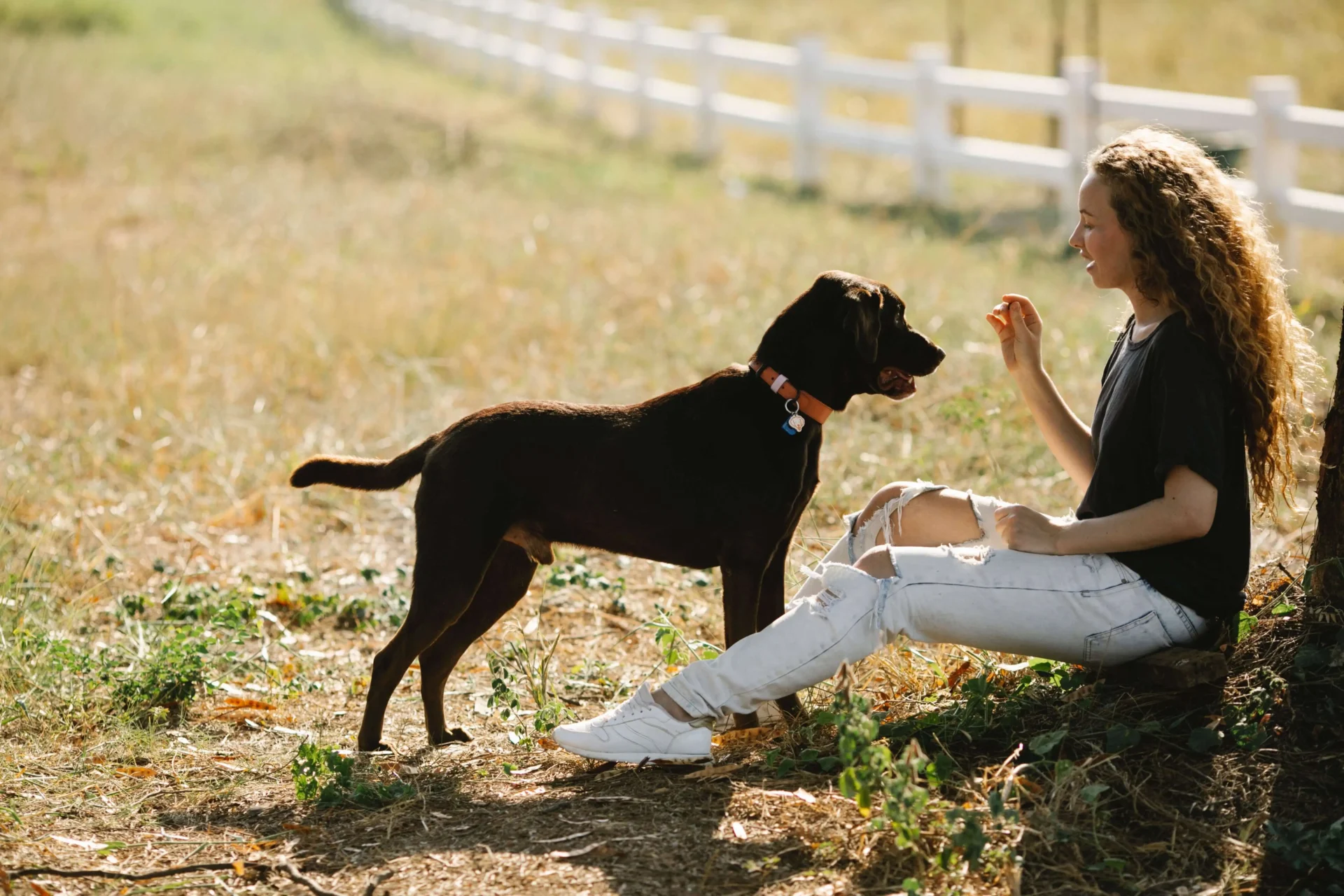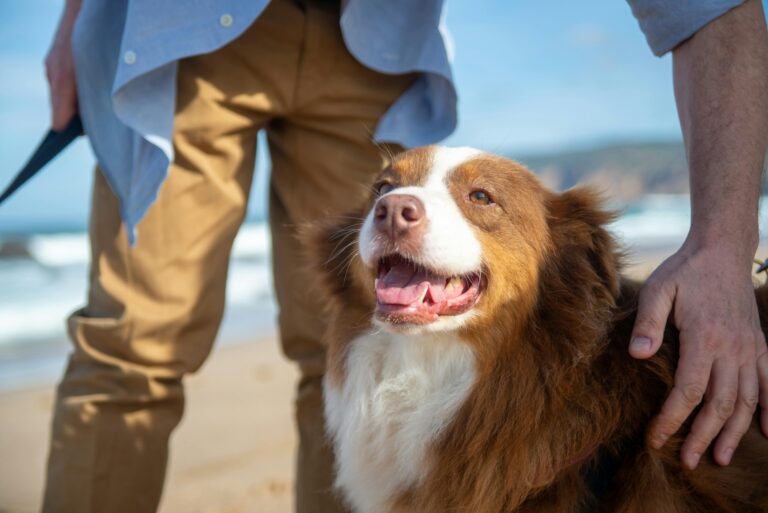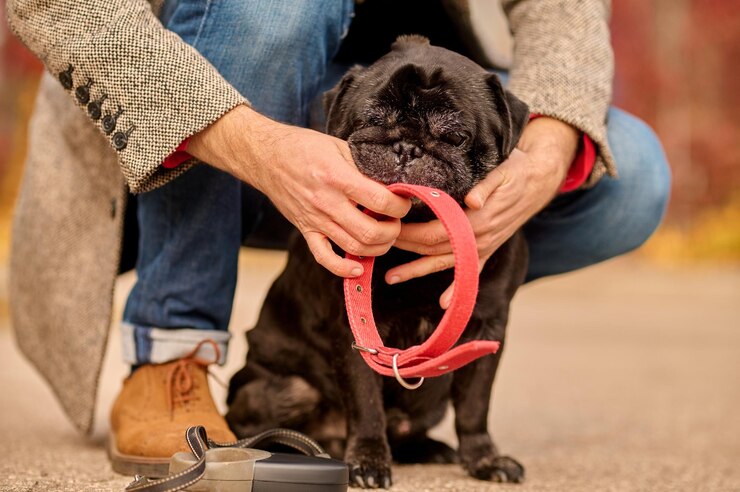6 Steps to Train a Dog Boundaries with Shock Collar-Proper Guideline
Train a Dog Boundaries with Shock Collar is a device that delivers mild electric stimulation to the dog’s neck when it crosses a predefined boundary. The goal of this training is to teach the dog to stay in a safe, desired place, like a garden or yard.
Understanding the Basics Train a Dog Boundaries with Shock Collar
Shock collar training is a technique for teaching dogs to follow directions and avoid unpleasant behaviors through the use of a device that delivers mild electric stimulation to the dog’s neck when the shock collar is activated. The shock collar can be activated manually using a remote control or automatically via a sensor that detects the dog’s proximity to a boundary or a stimulus.
Choosing the Right Shock Collar
Choose a shock collar that is suitable for the dog’s size, breed, and temperament. The shock collar should fit snugly and comfortably around the dog’s neck, with the contact points touching the dog’s skin. The shock collar should also have adjustable intensity and duration, as well as other kinds of stimulation, including sound, vibration, or spray.
Adjustable Intensity
Train a Dog Boundaries with Shock Collar Use the lowest possible level of shock that is effective for the dog. A little discomfort that attracts the dog’s attention is all that’s needed—no pain or distress from the shock. In addition to being short and consistent, the shock should only be given when the dog continues to exhibit undesirable behavior or disregards the warning signal.
Positive reinforcement
Train a Dog Boundaries with Shock Collar, Use the shock collar in conjunction with positive reinforcement. The shock collar should not be the only form of communication with the dog, but rather a part of a balanced training program that also includes rewards, praise, and affection. The shock collar should be used to correct the dog, not to punish or hurt the dog. The dog should also be given clear and consistent cues and commands before and after the shock so that the dog knows what is expected and how to avoid the shock.
How to train a dog’s boundaries with a shock collar
Train a Dog Boundaries with Shock Collar, Boundary training can be done in various ways, including with manual, wireless, or GPS-based shock collars. The specific instructions for setting up a transmitter, configuring the boundary coordinates, or marking the limits with flags will vary from one kind of shock collar to another. Train a Dog Boundaries with Shock Collar,Activating the shock collar or adjusting the stimulation intensity level may also require a remote control.
Related readings: HOW TO TRAIN A DOG WITH SHOCK COLLARS

Here are six general steps for Train a Dog Boundaries with Shock Collar:
- It will take some time for your dog to adjust to wearing the shock collar. Check that the collar is properly adjusted and that the points of contact are in touch with the dog’s skin. Before you use the collar on your dog, make sure it is properly adjusted to the lowest intensity setting and that you test it.
- Walk your dog side by side along the boundary lines you’ve drawn. To keep your dog from wandering off the leash, choose a lengthy one. Reward and praise your dog when it stays inside its boundaries, and gently pull it back if it tries to escape.
- Gradually introduce shock collar stimulation to your dog. Start at a low intensity and gradually increase it until you find the level that gets your dog’s attention. Give a warning signal, such as a beep or a vibration, before delivering the shock. Only give the shock if your dog crosses the border or disregards the warning signal. Praise and treat your dog when it returns to the boundary or stays within it.
- When your dog still doesn’t understand how to respect the boundary after a few weeks of training, try repeating the practice multiple times daily. You can use different distractions, such as toys, treats, or other animals, to test your dog’s response. Never train your dog alone while it’s wearing a shock collar; constant supervision is required.
- You should depend more on the warning signal and vocal instructions and use the shock collar stimulation less. With time, you can take out the shock collar and boundary flags and give your dog more freedom to run around inside.
- I hope that this information is useful in teaching your dog proper boundaries with a shock collar. On the other hand, I also want to inform you that a shock collar may cause your dog to experience undesirable side effects like discomfort, anxiety, aggression, or pain. Because of this, I advise against using a shock collar on your dog without first seeing a vet or certified dog trainer. Alternative approaches to boundary training, like the use of leashes, fences, or positive reinforcement, should also be considered.
What are the alternatives to shock collars?
Train a Dog Boundaries with Shock Collar Some owners use shock collars to train their dogs, but they can also be dangerous or confusing if used wrong. There are several alternatives to shock collars that will allow you to train your dog without causing pain or anxiety.
Here are a few examples: Train a Dog Boundaries with Shock Collar
- Clicker training: This is a method of teaching your dog to associate a sound (such as a click) with a reward (such as a treat). You can use the clicker to mark the exact moment your dog does something right and then give the reward. This way, your dog learns what you want them to do and is motivated to repeat it.
- Obedience training: This is a method of teaching your dog basic commands (such as sit, stay, and come) and rules (such as not jumping, barking, or biting). You can use positive reinforcement (such as praise, treats, and toys) to reward your dog for obeying, and negative punishment (such as ignoring, withdrawing attention, or taking away something your dog likes) to discourage unwanted behavior.
- Citronella collars: These are devices that spray a harmless but unpleasant-smelling substance (such as citronella) on the dog’s face when it barks or does something else you don’t want it to do. The spray startles and annoys the dog, making it stop its behavior. Unlike shock collars, these collars do not cause pain or injury to the dog.
- Dog whistles: These are devices that produce a high-pitched sound that only dogs can hear. You can use the whistle to get your dog’s attention, recall them, or stop them from doing something. The whistle should be paired with a reward or a command so that your dog learns what the sound means and what you want them to do.
- Outdoor fencing: These are physical barriers that prevent your dog from escaping or entering a certain area. You can use fences, gates, walls, or other structures to keep your dog safe and contained. Unlike shock collars, these barriers do not rely on electric stimulation or pain to deter your dog.
Indoor gates: These are devices that block your dog from accessing certain rooms or areas inside your house. You can use gates, doors, crates, or pens to keep your dog away from places where they can cause trouble or damage. Unlike shock collars, these devices do not hurt or scare your dog. - Harnesses and leashes: These are devices that attach to your dog’s body and allow you to control their movement and direction. You can use harnesses and leashes to walk your dog, teach them to heel, or prevent them from pulling, jumping, or chasing. Unlike shock collars, these devices do not cause discomfort or injury to your dog.
- Toys and puzzles: These are items that stimulate your dog’s mind and keep them entertained and busy. You can use toys and puzzles to provide your dog with mental and physical exercise, reduce boredom and stress, and prevent destructive behavior. Unlike shock collars, these items do not punish or hurt your dog.
- Socialization and play: These are activities that expose your dog to other dogs, people, and situations and allow them to have fun and interact. You can use socialization and play to teach your dog how to behave appropriately, make friends, and enjoy life. Unlike shock collars, these activities do not isolate or frighten your dog.
Pros and Cons of Train a Dog Boundaries with Shock Collar
| Pros | Cons |
|---|---|
| Shock collars can help protect a dog from other hazards in the wild, such as traps, briars, holes, or other animals, by giving a warning signal when the dog is out of reach or in danger | Shock collars can cause stress, fear, anxiety, aggression, or pain in dogs, which can affect their physical and mental health |
| Shock collars can help establish the human as the pack leader and keep the dog’s behavior in check, especially for dominant or aggressive dogs | Shock collars can damage the bond between the owner and the dog, as the dog may associate the shock with the owner or the environment rather than with their behavior |
| Shock collars can be adjusted to different levels of intensity, from a mild vibration or sound to a stronger shock, depending on the dog’s temperament and the situation | Shock collars can be misused or abused by the owner, either intentionally or unintentionally, which can result in overcorrection, under-correction, or inconsistent correction |
| Shock collars can be more effective than other methods of correction, such as choke collars or chain leashes, which can cause physical injury or discomfort to the dog | Shock collars can interfere with the natural learning process of the dog, as they may not understand why they are being punished or what they are supposed to do instead |
Conclusion
Train a Dog Boundaries with Shock Collar, training is a controversial method that requires careful consideration and responsible usage. It involves using positive reinforcement and reward-based methods alongside aversive tools to ensure a balanced and humane approach. However, individual dogs may respond differently, and monitoring behavior closely is essential to prevent negative consequences on their mental and emotional well-being. Ethical and responsible training methods, including professional guidance, are crucial for a successful and compassionate training process.
FAQs
Q: How long should the boundary training go on?
A: The duration of boundary training depends on the dog’s breed, age, and temperament. It can take anywhere from a few days to several weeks to train a dog to stay within certain boundaries.
Q: What is the best age to introduce a collar?
A: It is recommended to introduce a shock collar to a dog only after it has reached 6 months of age. This is because younger dogs are still developing and may not be able to handle the stress of a shock collar.
Q: How do you train a dog to stay within boundaries?
A: To train a dog to stay within certain boundaries, you can use a shock collar. The collar should be introduced gradually and properly to avoid causing harm and negative associations. You can also use other containment systems and methods such as using leashes and marker flags.
Q: How long does it take to train a dog with a shock collar?
A: The duration of training a dog with a shock collar depends on the dog’s breed, age, and temperament. It can take anywhere from a few days to several weeks to train a dog to stay within certain boundaries.
Q: Can you train a dog to stay in an unfenced yard?
A: Yes, you can train a dog to stay in an unfenced yard using a shock collar. However, it is important to introduce the collar gradually and properly to avoid causing harm and negative associations.
Q: How do I keep my dog away from certain areas?
A: To keep your dog away from certain areas, you can use a shock collar. The collar should be introduced gradually and properly to avoid causing harm and negative associations. You can also use other containment systems and methods such as using leashes and marker flags.
Q: What are the risks of using a shock collar?
A: The risks of using a shock collar include causing physical harm to the dog, creating negative associations, and damaging the relationship between the dog and the owner.
Q: What are the benefits of using a shock collar?
A: The benefits of using a shock collar include being able to train a dog to stay within certain boundaries, correcting unwanted behaviors, and keeping the dog safe.
Q: What are the alternatives to using a shock collar?
A: The alternatives to using a shock collar include using leashes, marker flags, and other containment systems. It is important to build a good relationship and bond with the dog before training with equipment.
Q: What should I do if my dog is not responding to the shock collar?
A: If your dog is not responding to the shock collar, you should stop using it immediately. You can try other containment systems and methods such as using leashes and marker flags. It is important to build a good relationship and bond with the dog before training with equipment.








One Comment